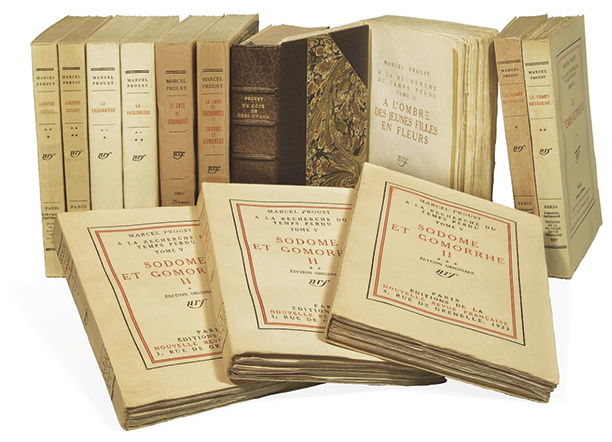Publication of 'À la recherche du temps perdu' begins
Proust's epic first appeared on November 14th, 1913.
 Marcel Proust’s huge fictionalised autobiography eventually ran to seven volumes with more than 2,000 characters. Translated into English by C.K. Scott Moncrieff as Remembrance of Things Past, it is now usually given the more accurate though somehow less compelling title In Search of Lost Time. It has been praised to the skies by many writers and critics, but has never been considered an easy read.
Marcel Proust’s huge fictionalised autobiography eventually ran to seven volumes with more than 2,000 characters. Translated into English by C.K. Scott Moncrieff as Remembrance of Things Past, it is now usually given the more accurate though somehow less compelling title In Search of Lost Time. It has been praised to the skies by many writers and critics, but has never been considered an easy read.
Proust was a Parisian. His father was professor of hygiene at the Faculty of Medicine in Paris, while his mother had a rich Jewish background. From the age of nine he suffered from asthma, which interfered with his schooling at the Lycée Condorcet. Growing up to move in aristocratic circles and high society salons, he was passionately devoted to his mother and her death in 1905 (his father had died two years before) was a blow from which he may never have fully recovered, though the legacy she left him gave him financial independence. Attracted to women, he also had homosexual affairs and there would be many homosexual scenes in À la recherche.
The young Proust wrote literary criticism and parodies, essays, short stories and translations of Ruskin. He began work on his masterpiece in 1909 and had to pay for the first volume, Du côté de chez Swann (usually Swann’s Way in English), to be published in 1913. The narrator recovers memories from the forgotten past that help him to a new understanding of his life, himself and the world. A famous example is the taste of a madeleine, a small sponge cake, which routinely dipped in tea suddenly thrillingly brings back to him vivid recollections of his childhood.
Proust withdrew from the world to work on his gigantic creation, sleeping during the day and writing at night. Struck down with pneumonia in 1922 at the age of 51, he rejected medical treatment and refused to eat. Man Ray photographed him on his deathbed and he was buried beside his parents in the family plot in the Père Lachaise Cemetery.




